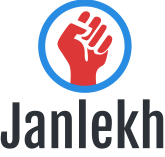By Anubha Khan
Waqf, an ancient Islamic charitable institution, plays a significant role in supporting various social, religious, and educational activities. However, this essential institution is not immune to corruption, which can erode the trust of beneficiaries and undermine its noble objectives. To address these challenges, leveraging digitalization and streamlining processes in waqf management can usher in a new era of transparency and accountability.
As reported in The Hindu (national English daily), The Telangana State Waqf Board (TSWB), which oversees over 33,929 properties throughout the State, is dealing with a number of difficulties, including hundreds of court disputes, staffing issues, encroachments, and the use of property parcels. There were many gaps in the use of waqf land parcels. The seven-story Waqf Garden View Mall, a vacant shell building next to the Haj House, which houses the TSWB’s offices, is a blatant illustration of this. The building has been empty for almost ten years. In the desirable Khairtabad neighbourhood is another undeveloped land tract. The TSWB received a jolt when officials from the Revenue Department locked off its record room in November 2017. The board still has not received complete, unrestricted access for more than five years later. TSWB sources claim that the Muslim endowments panel is involved in roughly 4,000 legal battles across several courts. According to the sources, the Government is involved in many of these situations. The then-TSWB Chief Executive Officer Shahnawaz Qasim wrote to the High Court Registrar requesting an online gateway be developed for access to the listing of cases given that the Waqf Tribunal, in accordance with Section 83 of the Waqf Act, has the authority to decide problems pertaining to waqf properties. The Tribunal lacks an electronic-court system as of now.
Digitalizing Waqf records and implementing a centralized database ensure the preservation and accessibility of historical documents, including deeds, titles, and beneficiary information. This step minimizes the risk of tampering & loss and promotes greater transparency in waqf management. Stakeholders can access information about waqf properties, revenue generation, and allocation of funds, bolstering public trust and deterring corrupt practices. Introducing digital platforms for waqf administration streamlines processes and reduces bureaucratic inefficiencies. Online portals for waqf registration, application submission, and monitoring enable quicker responses to beneficiaries’ needs, minimizing the scope for corruption through intermediaries. This streamlined approach fosters more efficient management and allocation of waqf assets.
Embracing digitalization and streamlining of waqf management represents a crucial step towards combating corruption and ensuring that this cherished Islamic institution fulfils its philanthropic objectives. By employing technologies like blockchain, centralized databases, and online platforms, waqf administrators can enhance transparency, accountability, and efficiency in the administration of endowments. A well-structured and technology-driven approach not only mitigates the risk of corruption but also strengthens public trust, encouraging continued support from donors and beneficiaries alike. Ultimately, by combining the principles of waqf with the power of digitalization, we can forge a more equitable and prosperous future, where the benefits of waqf reach those in need, free from the shackles of corruption.




